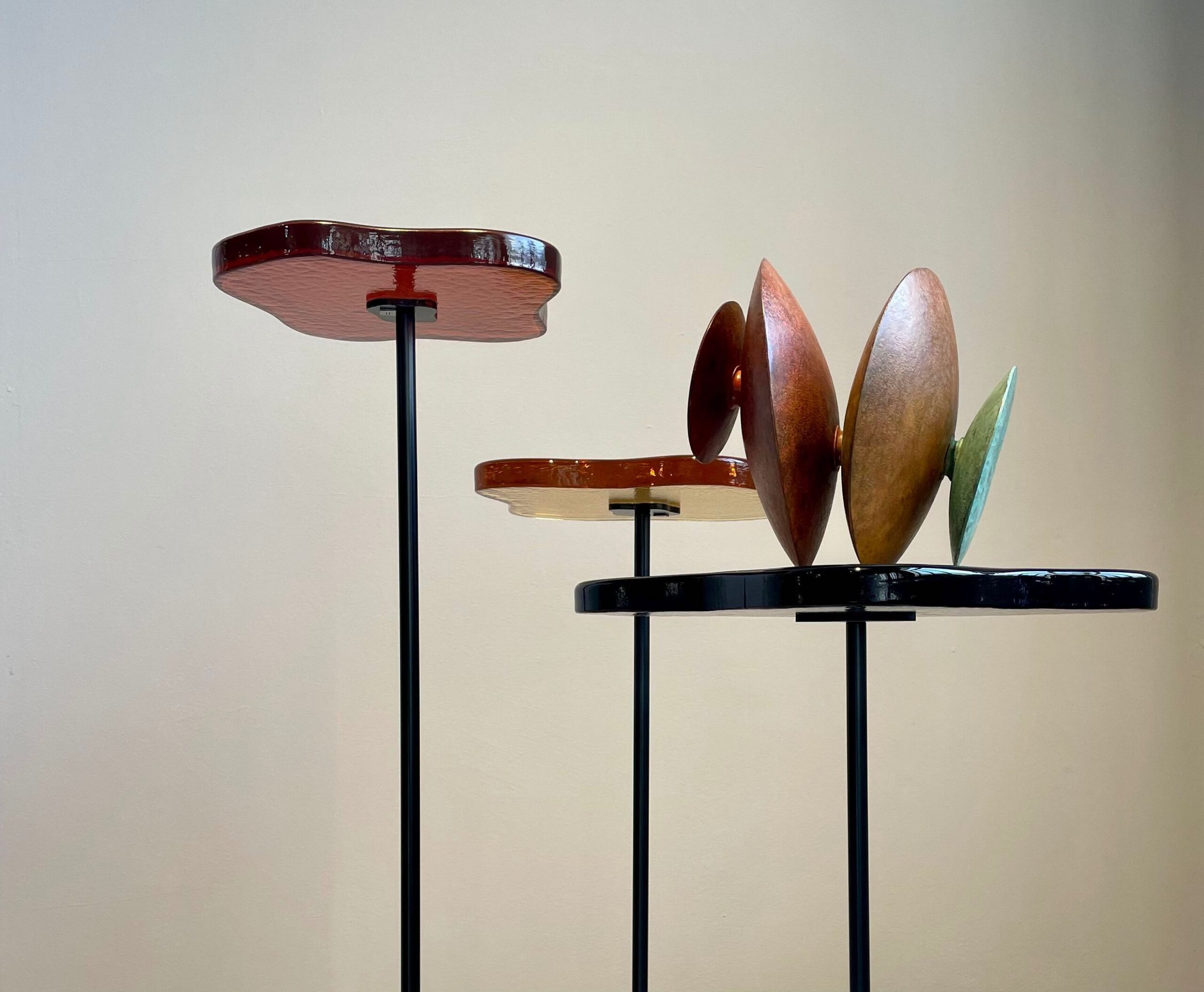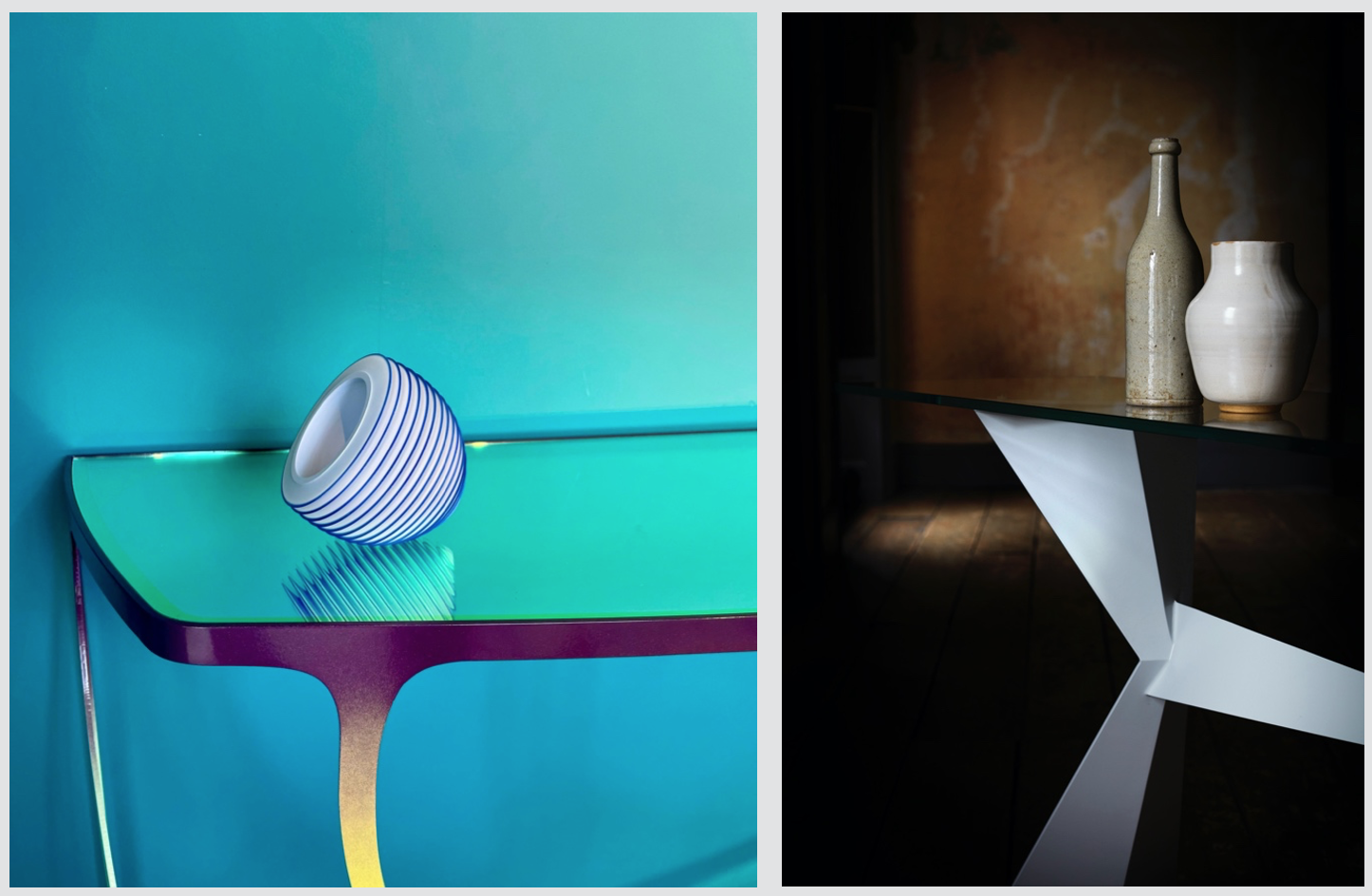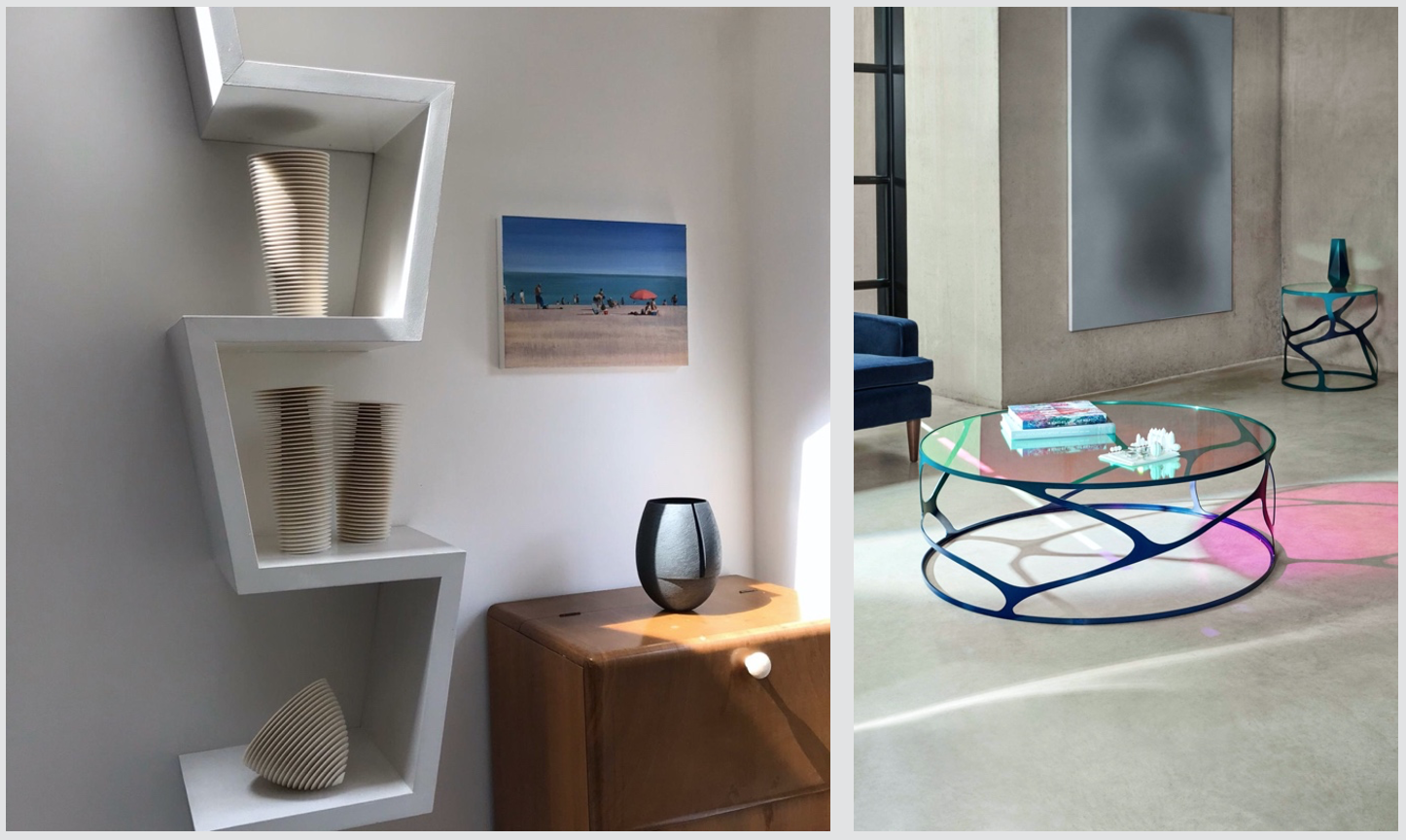Art comes to life when it leaps out of the gallery and into the world. It takes on an entirely new life in a domestic environment and holds the power to shift the look and feel of a home. Art can be intensely personal, reflecting not only our own unique style but the references and narratives that speak to us. Art not only serves to bring points of visual intrigue to our homes but to enrich the very fabrics of those spaces.
Contemporary craft gallery, Cavaliero Finn takes a decidedly personal approach to displaying art. Their focus is on presenting artworks in a way that feels natural within a domestic space. Tapestries are hung above furniture topped with ceramics and all manner of carefully curated curiosities. This ethos dovetails beautifully with our furniture pieces, made with a similarly hand-hewn, characterful glint to them. It’s our pleasure to be contributing a selection of furniture to Cavaliero Finn for this year’s installation of Collect art fair. If you’re interested in seeing founders, Debra and Juliana’s expert approach to art display in action, it’s well worth stopping by the fair, which is on at Somerset House from February 25th – 27th, with special previews on the 23rd and 24th. In the meantime, we’ve connected with Cavaliero Finn to glean their wisdom on how to display art in the home. Read on for a wealth of helpful tips to get you started…

Miniature painting by Gill Rocca and Floating Bowl by Nicholas Lees
Art Display Inspiration

Metal collection by Cecilia Moore; photographed by Juno Snowdon
To set you off on the right foot, a bit of visual research can go a long way. Debra and Juliana explain:
“Places like Kettles Yard in Cambridge and Charleston House in East Sussex are a great place for inspiration, and we return to them time and time again. Both places are about seeing art and craft in a domestic environment. Curator, Jim Ede, who lived in Kettles Yard House wasn’t afraid to experiment with hanging works high and low – a Brancusi sculpture on the piano, an Alfred Wallis painting in the loo, a Barbara Hepworth sculpture in the bedroom. Drawings hang in the attic floor to ceiling. Houses like these show that there is always a place for a treasured object, even in the most unexpected spots.”
Think about the spaces that speak to you and the creative ways that art shows up in them. Snap photographs of the vignettes than inspire you and put your own personal spin on those ideas at home.
Mixing and Matching Media

Print and painting by Gill Rocca, Ladders by Annie Turner and Ceramics by Jo Davies; photographed by Jon Day, styled by Karina Garrick
It’s surprising how combining artifacts of different kinds can create a distinct sense of visual dynamism, drawing out unexpected elements in each piece. Debra and Juliana note that “often when you place an object near a painting there is an instant synergy that can be accidental but strikingly beautiful”. The pair have shown art in Juliana’s South London home for 17 years now, peppering works over the kitchen table, on the piano, or along the mantlepiece. It takes a bit of playing around to find the right flow, but there’s a certain joy that comes from arranging and rearranging objets d’art. It’s amazing how shifting a couple of pieces can change the feel of a room, instantly refreshing the environment.
How to Hang Art

Gallery wall in mirror, ceramic print beakers by Hannah Tounsend
Debra and Juliana haven’t got set rules for hanging art, though they suggest that “eye level is a good start for wall works and we like to balance canvases with framed work. Big and small work well together and a wall of smaller works can make a fabulous statement. Some people think they have to buy big, but small works have power as well as drama and can hold a space”.
From a practical standpoint, Debra and Juliana have a wonderful system to keep you on track. “Mark out the measured hanging area of the wall on the floor with masking tape then place the works on the floor, arranging them how you would like to have them on the wall. Don’t worry about being too precise as they don’t need to be overly rigid; the heights and gaps can vary and still make for a striking hang. Photograph your display then you have that as a guide for your wall.”
Combining Art and Furniture

Metal collection by Cecilia Moore with Tom Faulkner’s Lily Cocktail Tables with Murano glass tops
When it comes to arranging art in your house, it works well to thread the pieces into the fabric of your life. After all, this is not a white cube, it’s your home! It’s full of other objects that speak to you, like carpets, furniture, and plants. Let all of those elements intermingle, enriching the overall character of the space.

Left: Floating Bowl by Nicholas Lees on Tom Faulkner’s Papillon Console Table in ‘Machaon’ with a ‘Dichroic’ glass top | Right: Ceramics on Tom Faulkner’s Echo Console Table in ‘Cool Grey’ with a clear glass top
Cavaliero Finn recommends combining elements of different styles and eras. “We like mixing furniture; mid-century and antique pieces can work beautifully with contemporary art. We prefer to veer away from styling from all the same decade.” It’s also important to think about colour and material. More light and textural ceramics, for example, can work well paired with sleek, geometric contemporary furniture with a dark finish to create a sense of contrast. Marble surfaces can also work in your favour as they often hold veins of various colours, which can serve to draw out those hues in an artwork. Glass and mirrored materials, on the other hand, can evoke a floating effect that amplifies visually illusionistic art objects.
How to Select Art

Left: Ceramics by Nicholas Lees and Ashraf Hanna, painting by David Edmond | Right: Tom Faulkner’s Papillon Coffee Table + Side Table in ‘Ulysseys Blue’ with ‘Dichroic’ glass tops
When collecting artworks, Debra and Juliana put a lot of stock into first impressions. “We look at how the work makes us feel emotionally.” If a piece strikes that initial chord, you’re off to a good start. From there, they tend to consider the aesthetic elements of the piece like form, colour, and texture. As experts, they’re also interested in what sort of techniques have been used to create those qualities in the work. Though, above all, it’s a rich sense of narrative that makes for a winning art piece. “This sets the work apart. If there’s a strong narrative thread running through the work, it makes it unique to the artist. It’s instantly recognisable and highly collectable, from Annie Turner’s weather-beaten ceramic sculptures inspired by the river Deben, to Ashraf Hanna’s undulating vessels influenced by Egyptian Dunes.”
“Narrative is important as it runs through the work like a defining recognisable thread. That is key to us as a gallery. The story behind the work is as important as the work itself. There is history in a piece and once we own the piece it becomes part of our history.”

Painting by Kate Sherman, ceramics by Ikuko Iwamoto
Cavaliero Finn is guided by curator, writer, and art historian, Glenn Adamson’s philosophy that we should strive to fill our lives with “fewer better things”. At the end of the day, Debra and Juliana reflect, “the objects we surround ourselves with are our companions in life. Knowing something has been made by hand with care over time, applying traditions spanning thousands of years, passed on from generation to generation, can only enhance our lives. These objects are built to last. We could move house but these objects stay with us on our journey. They become our landscape”.
For more inspiration on how to display art in your home, visit Cavaliero Finn’s website or have a look through their Instagram.
Text by Annabel Colterjohn, with expert comment from Debra and Juliana of Cavaliero Finn